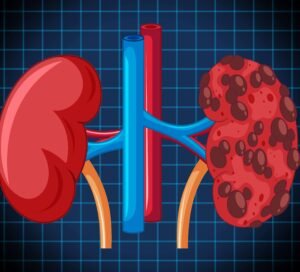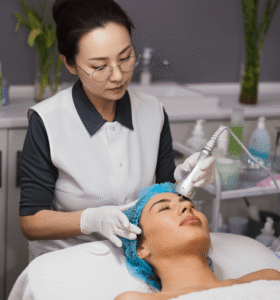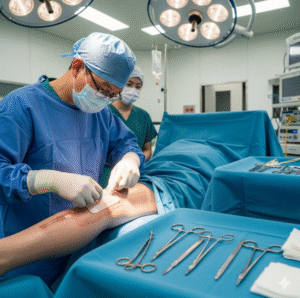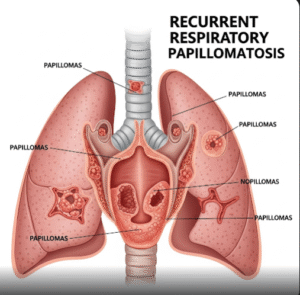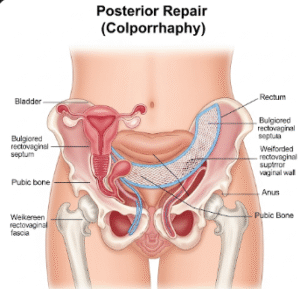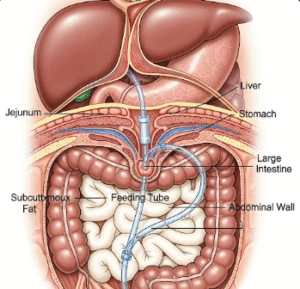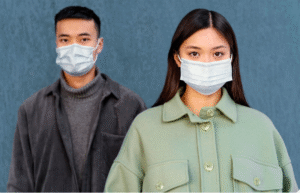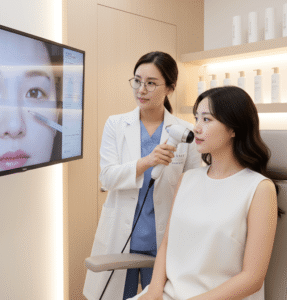Overview
Watering eyes, medically referred to as epiphora, is the excessive production or overflow of tears from the eyes. While tears are essential for lubrication and protection, persistent or excessive tearing may indicate an underlying problem.
➤ Watering eyes can be intermittent or constant, affecting one or both eyes.
➤ Common causes include eye irritation, infections, allergies, tear duct obstruction, or systemic conditions.
➤ In Korea, ophthalmology clinics provide comprehensive evaluation, treatment, and surgical options for persistent eye watering.
Key Facts
► Definition: Overflow of tears from the eyes due to increased production or blockage of tear drainage.
► Prevalence: Affects individuals of all ages; more frequent in infants, older adults, and allergy sufferers.
► Associated symptoms: Redness, itching, blurred vision, discharge, eye pain.
► Risk factors: Allergies, dry eyes, infections, blocked tear ducts, environmental irritants.
► Treatment in Korea: Includes medications, tear duct procedures, allergy management, and minor surgeries.
What Is Watering Eyes?
Watering eyes (epiphora) occurs when the lacrimal glands produce excessive tears or when the tear drainage system (nasolacrimal duct) is blocked.
➔ Tears help lubricate the eyes, remove debris, and protect from infection.
➔ Excessive tears may overflow onto the cheeks, causing discomfort and social inconvenience.
➔ Watering may be temporary, triggered by irritants, or chronic, due to structural or medical issues.
What Symptoms Are Related to Watering Eyes?
Symptoms vary depending on cause:
→ Excessive tearing or overflow from one or both eyes.
→ Redness or irritation, sometimes with itching.
→ Blurred vision or transient visual disturbances.
→ Discharge or crusting, especially in infections.
→ Sensitivity to light (photophobia) in certain conditions.
→ Swelling near the inner corner of the eye if tear duct obstruction is present.
→ Frequent wiping of eyes and discomfort around the eyelids.
Causes / Possible Causes of Watering Eyes
Infectious Causes
➤ Conjunctivitis (bacterial or viral) – Causes irritation, discharge, and reflex tearing.
➤ Blepharitis – Inflammation of eyelids causing tear overproduction.
➤ Keratitis – Corneal infection leading to tearing and pain.
Allergic and Environmental Causes
➔ Seasonal allergies (hay fever, allergic conjunctivitis) – Common cause of itchy, watery eyes.
➔ Exposure to irritants – Smoke, dust, wind, or chemicals.
➔ Dry eyes – Paradoxically, dryness triggers reflex tearing.
Structural and Obstructive Causes
→ Blocked nasolacrimal duct – Prevents normal tear drainage.
→ Congenital tear duct obstruction – Common in infants.
→ Eyelid abnormalities (entropion, ectropion) – Misalignment can impair tear drainage.
Other Contributing Factors
➤ Aging – Tear production and drainage may change.
➤ Medications – Some eye drops or systemic drugs may alter tear balance.
➤ Systemic conditions – Autoimmune disorders, sinus disease, or hormonal changes.
When Should I See My Doctor?
Seek medical evaluation if:
➤ Tearing is persistent, unilateral, or worsening over time.
➤ There is pain, swelling, or redness in or around the eyes.
➤ Discharge is yellow, green, or foul-smelling, suggesting infection.
➤ Vision is blurred or significantly affected.
➤ Early evaluation helps prevent complications such as chronic infection or scarring.
Care and Treatment
Lifestyle and Self-Care Measures
► Avoid rubbing eyes, which can worsen irritation.
► Protect eyes from wind, dust, and smoke using sunglasses or protective eyewear.
► Use artificial tears or lubricating drops for mild dryness-related watering.
► Maintain proper hygiene, especially if bacterial infection is suspected.
► Avoid known allergens or irritants that trigger excessive tearing.
Medical Treatments
➔ Antihistamines or anti-allergy eye drops for allergic causes.
➔ Antibiotic drops or ointments for bacterial infections.
➔ Anti-inflammatory medications for chronic blepharitis or eyelid inflammation.
➔ Lubricating eye drops for dry eye-induced reflex tearing.
Procedural and Advanced Interventions
→ Nasolacrimal duct probing or irrigation for blocked tear ducts.
→ Minor surgical procedures – Dacryocystorhinostomy for persistent obstruction.
→ Laser or stent placement – To improve tear drainage in severe cases.
→ Ophthalmologic imaging – To evaluate structural or anatomical abnormalities.
Treatment Options in Korea
Diagnosis in Korea
➤ Comprehensive eye examination by ophthalmologists.
➤ Dye tests, irrigation, or probing to assess tear duct function.
➤ Allergy testing and environmental assessment for chronic or recurrent cases.
➤ Imaging studies (CT, MRI) if structural obstruction is suspected.
Non-Surgical Care
► Eye drops (antihistamines, lubricants, antibiotics) for symptomatic relief.
► Warm compresses and eyelid hygiene for blepharitis or eyelid inflammation.
► Allergy management with medications and environmental control.
Advanced Care
➔ Dacryocystorhinostomy or stenting for persistent or congenital tear duct obstruction.
➔ Multidisciplinary management for complex cases involving ENT specialists.
➔ Follow-up to monitor treatment effectiveness and recurrence prevention.
Rehabilitation and Lifestyle Support
→ Education on preventing eye irritation and maintaining eye hygiene.
→ Guidance on avoiding environmental triggers and allergens.
→ Monitoring in infants, elderly, or immunocompromised patients to prevent complications.
Korean clinics provide expert ophthalmology care, advanced diagnostic tools, and personalized treatment plans to effectively manage watering eyes.


